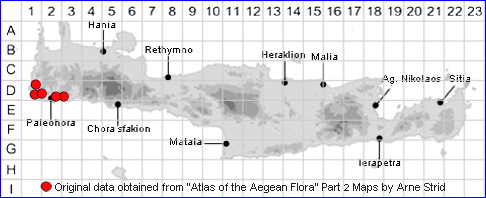
SPECIES DESCRIPTION
NIGELLA STRICTA
Family and Genus:- See- RANUNCULACEAE
Common Names:- None
Homotypic Synonyms:- None
Meaning:- Nigella (L) Blackish, (reference to the seed coats).
Stricta (L) Straight.
General description:- Procumbent or occasionally suberect annual.
Stem:-
1) 5-12 cm, procumbent, with divaricate branches.
Leaves:- .
1) Basal, with rather few, linear-lanceolate laciniae, often withered at anthesis.
2) Cauline, pure green, glossy, the
3) Uppermost, forming a loose involucre.
Flower:-
1) Small, (10-15 mm Æ.).
2) Sepals, white to pale bluish-violet.
3) Perianth-segments, reddish.
4) Limb, rather narrow, cuneate at the base.
a) claw, 0.55-0.7 times as long as the limb.
5) Honey leaves, lower lip lobes, narrow, vivid red in the upper half.
6) Anthers, shortly mucronate, vivid red.
Fruit:-
1) Follicles, 8-14 mm, united to 25-40 %, outward-curving and widely divergent.
2) Seeds, triquetrous.
Key features:-
1) Plant, 5-15 cm, procumbent with short, rigid branches.
2) Honey leaves, vivid red in front.
3) Follicles, widely divergent, united to 25-40 %
5) Flowers, 9-15 mm in Æ.
6) Beak, 0.3-0.8 times as long as follicle.
Habitat:- Maritime sand and gravel, stablized dunes and coastal dry open shrubby
vegetation 0-50 m.
Distribution:- Endemic to Crete and Kithera. On Crete known only from the
extreme south west.
Flowering time:- April-mid May
Photos by:-
